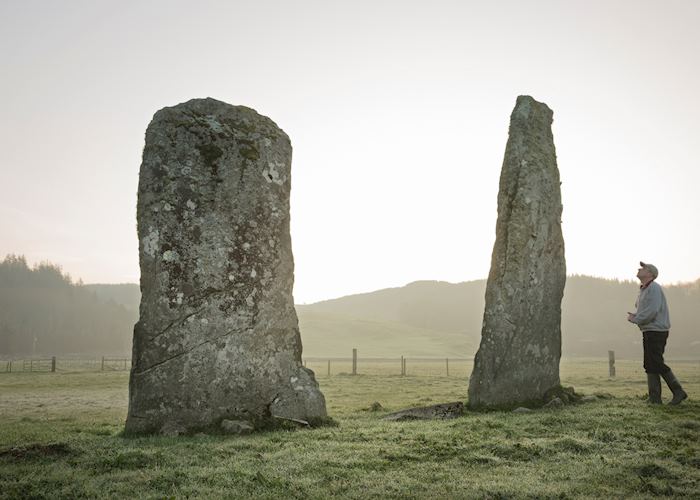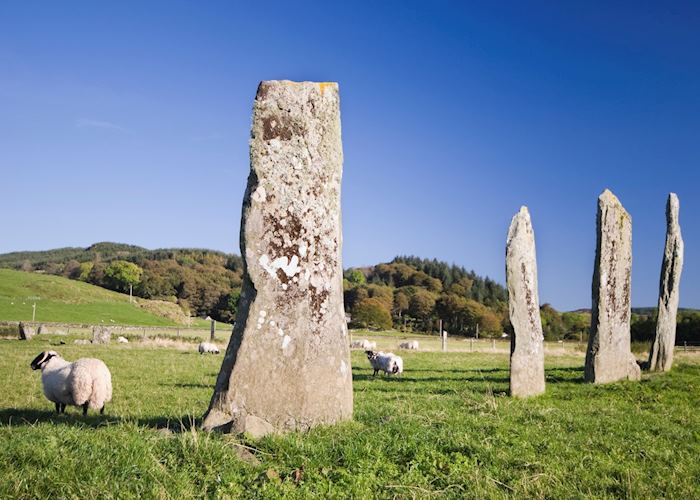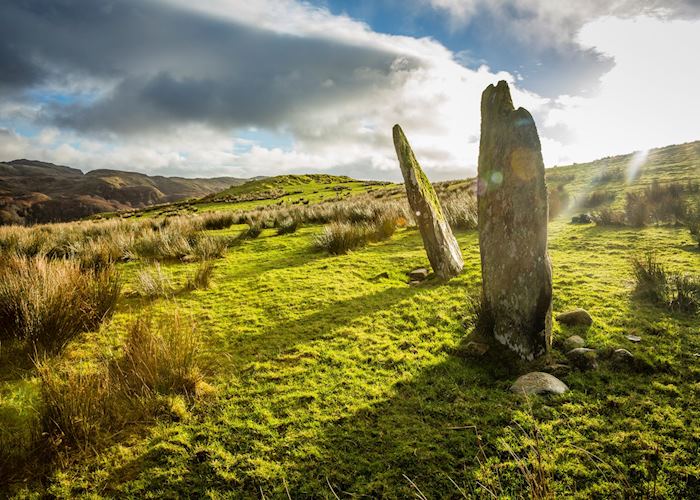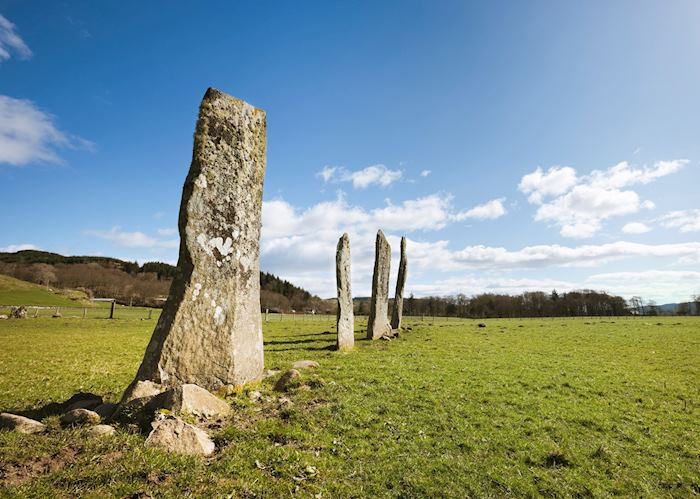You tour begins at your hotel in Oban where your guide picks you up to take you to Kilmartin Glen, about an hour’s drive to the south. En route, learn about the history of the area, why it was chosen as an early settlement and burial site, and its 5,000-year history.
Before reaching the glen, stop off at the substantial ruins of Carnasserie Castle, a 16th-century bishop’s residence. You can climb up to the ramparts to take in the sweeping views across Kilmartin Glen, giving a sense of the scale of valley and its prehistoric remains.
The area contains the highest concentration of Neolithic and Bronze Age remains in Scotland, with more than 350 standing stones, cairns, stone circles, carvings and stone forts within 10 km (6 miles) of Kilmartin village.
From the castle, continue to some of the most notable sites, including Temple Wood, one of the most attractive stone circle sites in the vicinity. It consists of two rings of standing stones within a wooded area and was in use from about 3000 BC to 1000 BC. The southern circle has a central burial cist, encircled by more stones, while the northern circle has just one stone at its heart.
Nearby is the Nether Largie South Cairn, one of several burial cairns in a linear cemetery that crosses the glen. Built 5,000 years ago, it is thought to have been the burial place of local chiefs. To the north, the Nether Largie North Cairn boasts stones carved with shallow depressions called cup-and-ring marks. You can also see the Glebe Cairn where burial offerings, including an elaborately-decorated food bowl and a jet necklace, were found.
Finds from the sites are on display in the small museum in Kilmartin village, which you will visit with your guide, who can further elaborate on the styles and developments in the forms of tools, pottery and weapons used throughout the time this region was occupied. Once you’ve had a chance to explore the museum, your guide will drop you back to your hotel in Oban.






